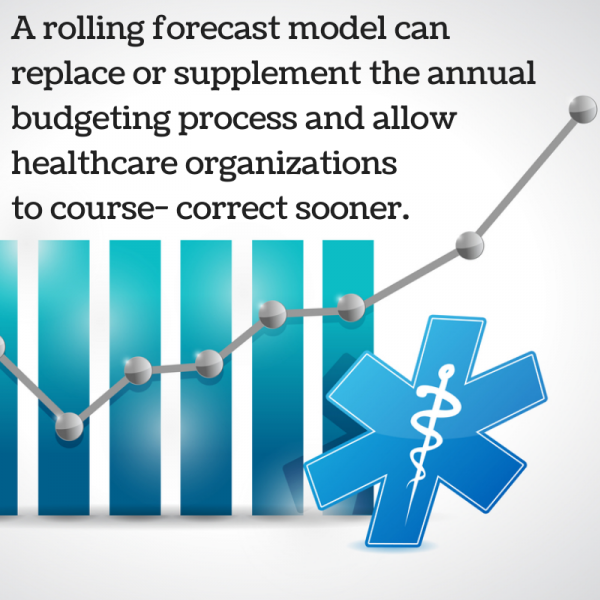In today’s rapidly evolving healthcare environment, provider organizations must be able to identify financial performance gaps continuously and quickly change course when needed. As we discussed in my blog: Elevating the Role of Finance within the Hospital, this requires a partnership with operations to ensure that the correct metrics are correlated within the budget process, but being agile is also influenced by the mechanism the hospital uses for budgeting.
 The use of a rolling forecast to replace or supplement the annual budget process
The use of a rolling forecast to replace or supplement the annual budget process
What is a rolling forecast? The rolling forecast is usually a quarterly budget with a two to three year horizon that keeps a close eye on the organization trajectory. Typically the forecast budget is not prepared at the department level but may instead focus on divisions or even at a hospital level. Global budget drivers and assumptions will typically be the same as the annual budget but those unique to a department or division may not be line itemed.
The forecast is built using historical trends, current conditions and future assumptions for budget drivers. Some forecasts may be primarily driven by revenue drivers with expenses flowing from ratios defined to the model. The forecast feedback process fosters the partnership between finance and operations to allow the healthcare organization to course-correct sooner and reinforce the cause effect relationships that effect reality. Some organizations use the rolling forecast process in conjunction with the annual budget and others have moved to using the forecast only.
Benefits of replacing the annual process with a rolling forecast may include:
- Spending fewer resources on budget preparation and variance analysis.
- Reinforces a culture of continuous performance management.
- Allows a longer ramp-up time for course correction.
- Supports the organization’s economic model (3-5 year macro level plan) used for capital allocation decisions, margin targets, M&A modeling and other purposes.
The rolling forecast should be tailored to meet your organization’s needs and based on my experience; the forecast should be a continuous learning process and more flexible to make necessary changes when needed from both a process and a technology perspective.
Perficient is a large healthcare systems integrator with deep healthcare domain expertise and we are a platinum Oracle partner having implemented over 450 projects leveraging the Oracle Enterprise Performance Management platform. Stop by our booth at #HIMSS14 booth #2035 to view our case studies.
Follow me on twitter @teriemc.
- View “A Profitability and Cost Management Strategy for Healthcare Providers“
- Download “A Solution to the “Signal to Noise” Problem for Healthcare Organizations” white paper
